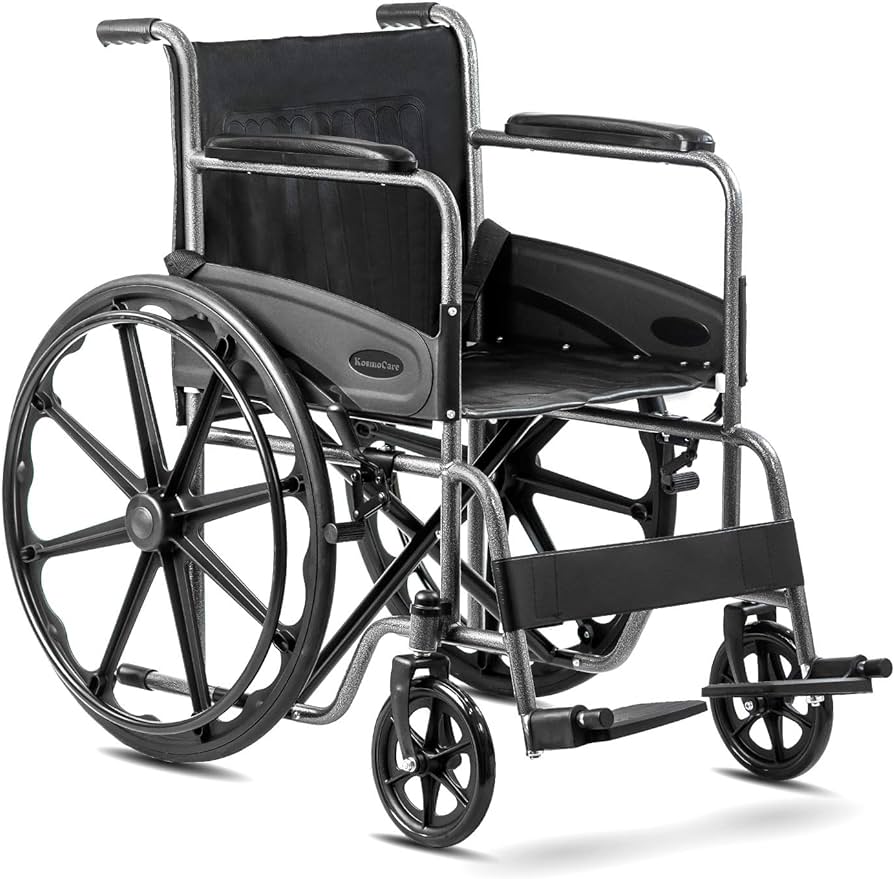Blog Details

Wheel Chair
🗓 09-Sep-2024
Wheelchairs are essential mobility aids designed to provide individuals with limited or no ability to walk the means to move around independently. They come in various types and configurations to suit different needs and preferences. Here’s a comprehensive overview of wheelchairs, including types, features, and considerations:
Types of Wheelchairs
Manual Wheelchairs
Standard Manual Wheelchairs:
- Features: Operated by the user or an attendant pushing the wheelchair. Typically have large rear wheels and smaller front wheels.
- Uses: Suitable for users who have upper body strength and need a basic, cost-effective mobility solution.
Lightweight Manual Wheelchairs:
- Features: Made from lightweight materials such as aluminum or titanium, making them easier to maneuver and transport.
- Uses: Ideal for active users who need a wheelchair that is easier to lift and push.
Folding Manual Wheelchairs:
- Features: Can be folded for easy storage and transport. Often used for users who need a portable option.
- Uses: Convenient for travel and situations where space is limited.
Electric (Power) Wheelchairs
Standard Power Wheelchairs:
- Features: Powered by electric motors and controlled using a joystick or other control device. Offer smooth and effortless movement.
- Uses: Ideal for users who have limited upper body strength or prefer an electric option for ease of use.
Heavy-Duty Power Wheelchairs:
- Features: Designed for users with higher weight capacities and often come with more robust construction and features.
- Uses: Suitable for individuals requiring extra support and durability.
All-Terrain Power Wheelchairs:
- Features: Equipped with rugged tires and suspension systems to handle various terrains, including rough or uneven surfaces.
- Uses: Ideal for outdoor activities and navigating challenging environments.
Transport Wheelchairs
- Features: Lightweight and designed primarily for short-distance transport by an attendant. Typically have smaller wheels and are easier to fold.
- Uses: Useful for occasional use and for transporting individuals who do not require long-term mobility assistance.
Reclining and Tilt-in-Space Wheelchairs
Reclining Wheelchairs:
- Features: Allow the backrest to recline and often include adjustable leg rests. Useful for users who need to change positions frequently.
- Uses: Provides comfort and pressure relief for individuals who spend extended periods in the wheelchair.
Tilt-in-Space Wheelchairs:
- Features: The entire seating unit tilts backward, redistributing pressure and improving comfort. Often used for pressure sore prevention.
- Uses: Ideal for individuals with specific medical needs related to pressure management and comfort.
Standing Wheelchairs
- Features: Allows users to transition from a seated to a standing position. Provides the benefits of standing while using a wheelchair.
- Uses: Supports users with limited mobility who need or prefer to stand for health or personal reasons.
.png)